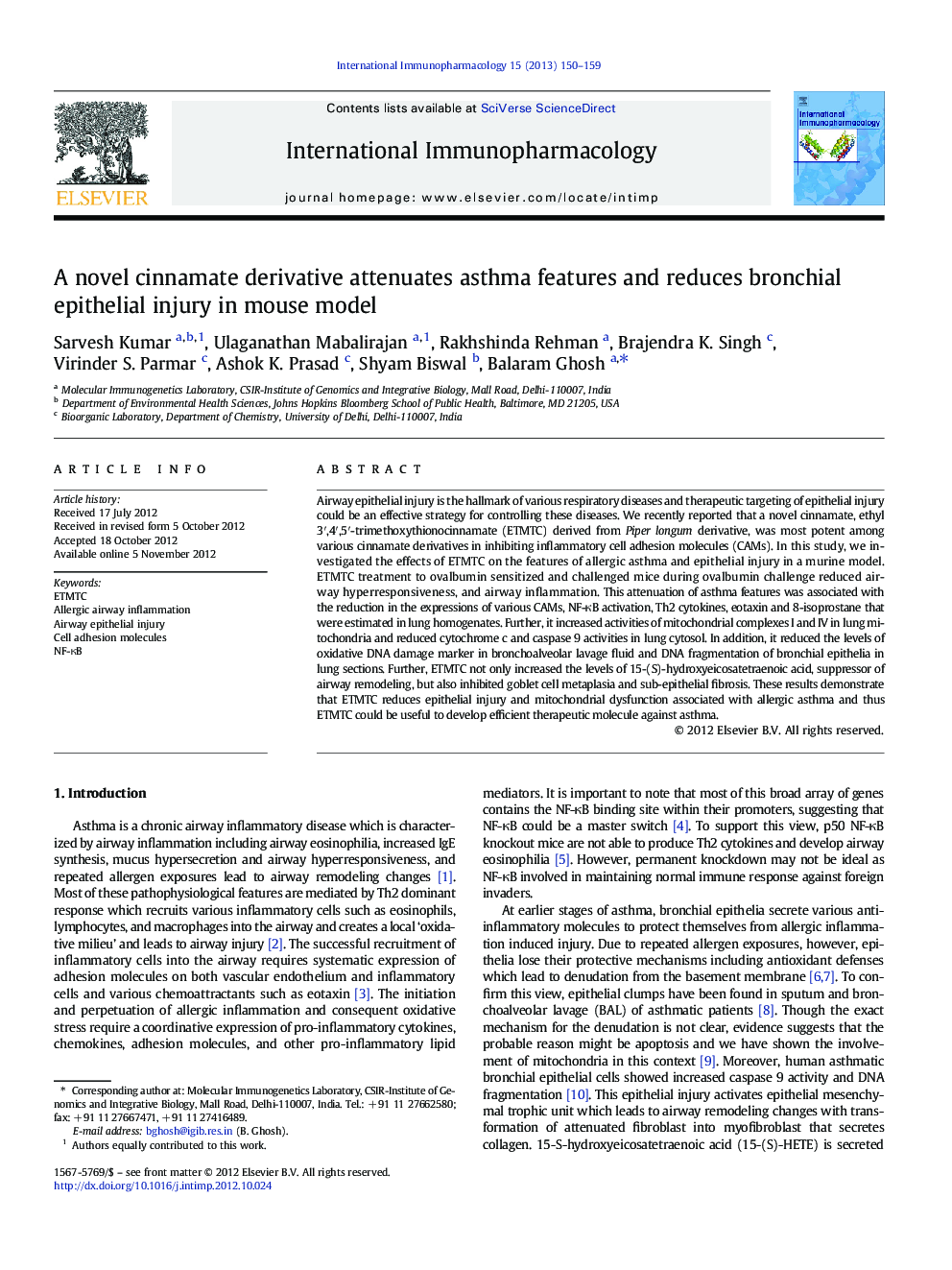| Article ID | Journal | Published Year | Pages | File Type |
|---|---|---|---|---|
| 2540939 | International Immunopharmacology | 2013 | 10 Pages |
Airway epithelial injury is the hallmark of various respiratory diseases and therapeutic targeting of epithelial injury could be an effective strategy for controlling these diseases. We recently reported that a novel cinnamate, ethyl 3′,4′,5′-trimethoxythionocinnamate (ETMTC) derived from Piper longum derivative, was most potent among various cinnamate derivatives in inhibiting inflammatory cell adhesion molecules (CAMs). In this study, we investigated the effects of ETMTC on the features of allergic asthma and epithelial injury in a murine model. ETMTC treatment to ovalbumin sensitized and challenged mice during ovalbumin challenge reduced airway hyperresponsiveness, and airway inflammation. This attenuation of asthma features was associated with the reduction in the expressions of various CAMs, NF-κB activation, Th2 cytokines, eotaxin and 8-isoprostane that were estimated in lung homogenates. Further, it increased activities of mitochondrial complexes I and IV in lung mitochondria and reduced cytochrome c and caspase 9 activities in lung cytosol. In addition, it reduced the levels of oxidative DNA damage marker in bronchoalveolar lavage fluid and DNA fragmentation of bronchial epithelia in lung sections. Further, ETMTC not only increased the levels of 15-(S)-hydroxyeicosatetraenoic acid, suppressor of airway remodeling, but also inhibited goblet cell metaplasia and sub-epithelial fibrosis. These results demonstrate that ETMTC reduces epithelial injury and mitochondrial dysfunction associated with allergic asthma and thus ETMTC could be useful to develop efficient therapeutic molecule against asthma.
► Ethyl 3′,4′,5′-trimethoxythionocinnamate (ETMTC) is known to inhibit inflammatory cell adhesion molecules. ► ETMTC administration decreases mitochondrial dysfunction in OVA induced mice. ► ETMTC administration reduces airway injury in OVA induced mice. ► ETMTC administration reduces airway remodeling changes in OVA induced mice.
